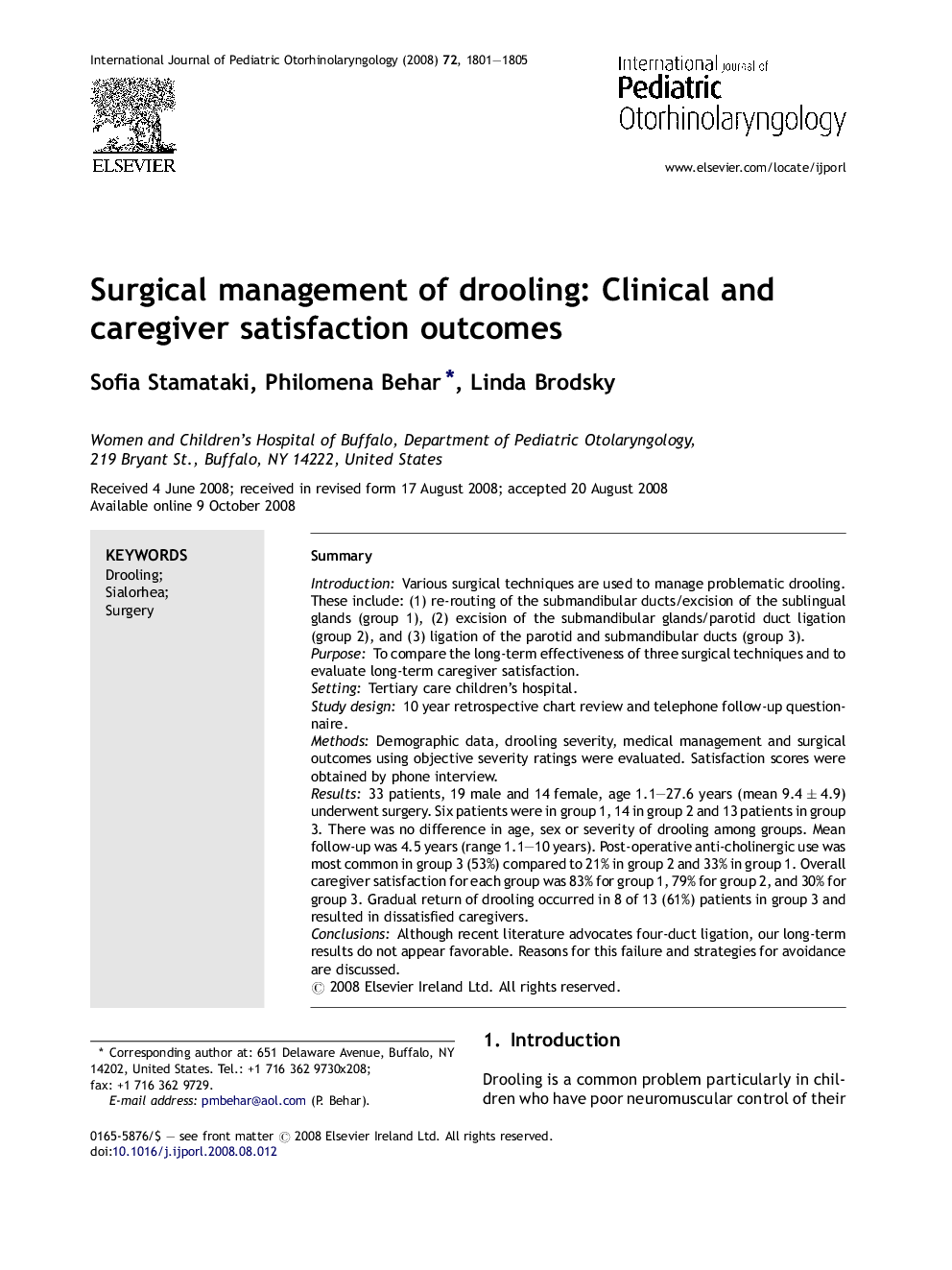| Article ID | Journal | Published Year | Pages | File Type |
|---|---|---|---|---|
| 4115480 | International Journal of Pediatric Otorhinolaryngology | 2008 | 5 Pages |
SummaryIntroductionVarious surgical techniques are used to manage problematic drooling. These include: (1) re-routing of the submandibular ducts/excision of the sublingual glands (group 1), (2) excision of the submandibular glands/parotid duct ligation (group 2), and (3) ligation of the parotid and submandibular ducts (group 3).PurposeTo compare the long-term effectiveness of three surgical techniques and to evaluate long-term caregiver satisfaction.SettingTertiary care children’s hospital.Study design10 year retrospective chart review and telephone follow-up questionnaire.MethodsDemographic data, drooling severity, medical management and surgical outcomes using objective severity ratings were evaluated. Satisfaction scores were obtained by phone interview.Results33 patients, 19 male and 14 female, age 1.1–27.6 years (mean 9.4 ± 4.9) underwent surgery. Six patients were in group 1, 14 in group 2 and 13 patients in group 3. There was no difference in age, sex or severity of drooling among groups. Mean follow-up was 4.5 years (range 1.1–10 years). Post-operative anti-cholinergic use was most common in group 3 (53%) compared to 21% in group 2 and 33% in group 1. Overall caregiver satisfaction for each group was 83% for group 1, 79% for group 2, and 30% for group 3. Gradual return of drooling occurred in 8 of 13 (61%) patients in group 3 and resulted in dissatisfied caregivers.ConclusionsAlthough recent literature advocates four-duct ligation, our long-term results do not appear favorable. Reasons for this failure and strategies for avoidance are discussed.
